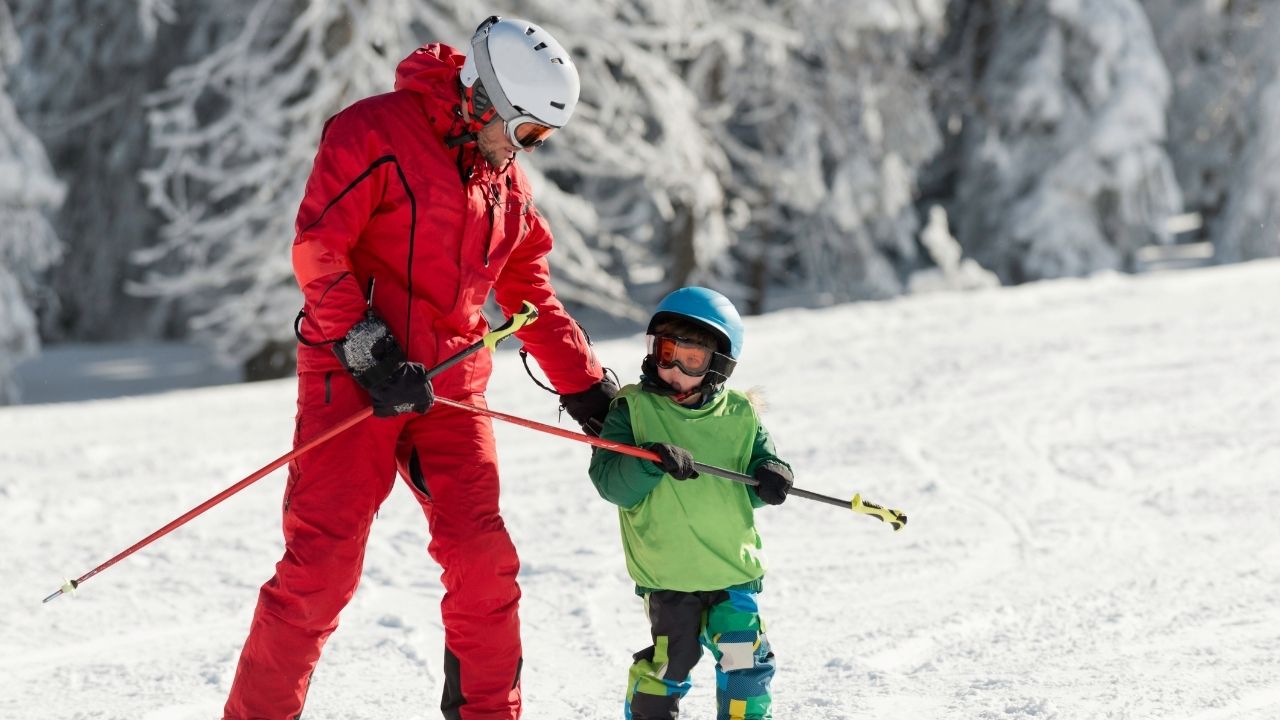Fear of skiing in children is a common occurrence, especially in young skiers who are taking up the sport for the first time. Cold weather, the feeling of slipping and the possibility of falling can increase the fear of skiing in children. However, with family support, safe slopes and professional instructors, children’s fear of skiing can be overcome gradually. With the right equipment, small exercises and playful learning methods, this fear can turn into a pleasant experience.
What Causes Fear of Skiing in Children?
The main reason children experience fear while skiing is unfamiliarity. When trying a sport they have never tried before, the slipperiness of the snow and the inability to maintain balance can be frightening for them. The possibility of falling creates a feeling of loss of control in children, which increases their fear. In addition, the fast movements of other skiers can also make children feel insecure.
Another reason is parents’ expectations. Pushing children onto challenging slopes without considering their age or physical development increases anxiety. The child withdraws, fearing failure. At this point, it is crucial for parents to be patient and supportive.
The Importance of Creating a Safe Environment
Creating a safe environment is essential for children to overcome their fear of skiing. First, the chosen slope must be suitable for the children’s age and skill level. Ski resorts usually have special slopes for beginner-level children. These slopes are shorter and less steep, so children feel safe.
Equipment selection is also an important part of safety. Lightweight skis special for children, comfortable boots and the use of a helmet increase safety. In addition, the child should be dressed in clothes that are of appropriate thickness but do not restrict freedom of movement. When safety precautions are taken, children behave more relaxed and are more open to learning.
Professional instructor support is also part of a safe environment. Experts in their field facilitate the process with age-appropriate education methods. Instructors also provide psychological support to children by providing guidance to families.
Practicing Skiing in Small Steps
In order for children to overcome their fear of skiing, the learning process should be gradual. In the first stage, children should only be allowed to walk on snow and practice balance with boots. This allows the child to get used to the snowy ground.
Then, simple sliding trials can be practiced on flat and gently sloping areas. At this stage, children should be told that falling is natural and taught how to get up when they fall. Progressing with small successes increases children’s self-confidence.
The next stage is to learn to stop in control. When children manage to stop themselves with simple braking techniques while sliding slowly, they leave most of their fears behind. Throughout the process, the child’s success should be praised and a patient approach should be shown.
Thanks to these small steps, children begin to see skiing as an enjoyable experience and become ready for more challenging slopes over time.
Incorporating Play and Fun into Ski Training
Play is one of the most effective methods in children’s learning process. When play is incorporated into ski training, children associate the sport with fun and their fears are reduced. Instructors and families can make the learning process enjoyable by playing snowball, preparing simple tracks or organizing competitions.
Gamification allows children to train for a long time without distractions. In addition, with group activities, children learn with their friends, which provides a positive social experience. In fun-oriented trainings, children’s motivation increases and their fears are replaced by curiosity.
Professional facilities such as Erciyes Ski Resort organize special play-based ski programs for children. Thanks to these programs, children learn in a safe environment and accumulate fun memories.
How Families Support Children
One of the most important steps in overcoming the fear of skiing in children is the right approach of families. Families should show a supportive attitude instead of putting pressure on children. Minimizing or ridiculing a child’s fears can damage their sense of confidence. Instead, it is much more beneficial to listen patiently and try to understand their feelings.
Parents should praise and motivate their children’s small successes. Simple sentences such as “You did it, you are doing very well” increase children’s self-confidence. In addition, families spending time with their children on the tracks and setting an example for them makes the learning process more enjoyable. When children feel the support of their parents, they feel safe and are more willing to ski.
Building Children’s Confidence with Professional Trainers
Although the support of families is important, the contribution of professional instructors plays a major role in children’s ski learning process. Expert instructors approach children with appropriate methods and create a training plan according to their age level. Knowing that children have short attention spans, instructors make the lessons interesting by gamifying them.
Professional instructors also teach safety rules so that children can be more aware on the slopes. The positive feedback a child receives from an expert instructor boosts their self-confidence and reduces their fears. Instructors also provide guidance to families, offering suggestions on how to support children at home or off the track.
Choosing Suitable Ski Equipment for Children
Choosing the right equipment is crucial for success and safety in skiing. Children’s skis should be lighter and easier to control than adult equipment. Choosing the wrong size makes learning difficult and jeopardizes safety.
-
Skis should be chosen to fit the child’s height, usually 15-20 cm shorter than the height.
-
The boots should fit snugly but not uncomfortably. The foot should not slip inside the boot.
-
A helmet is essential safety equipment for children. The helmet, which provides protection against impacts, must be the right size.
-
Glasses are essential to protect children from both the sun’s rays and the glare of snow.
Choosing the right equipment makes the child feel more comfortable and safe on the track. This accelerates the learning process and helps to reduce fears.
The Importance of Patience, Encouragement and Positive Approach
A patient approach is essential for children to overcome their fear of skiing. Every child learns at a different pace; some get used to skiing in a short time, while others may need more time. Families and instructors should accept this difference and not force the child.
A positive approach also increases motivation. Even when your child falls, using encouraging phrases such as “It is normal to fall, try again” reduces his/her anxiety. Also, setting small goals and rewarding them when they achieve them makes the process more fun.
It is important to remember that skiing is not only a physical activity for children, but also an experience that builds self-confidence. With patience, encouragement and a positive approach, children overcome their fears, start skiing safely on the slopes and enjoy skiing.

